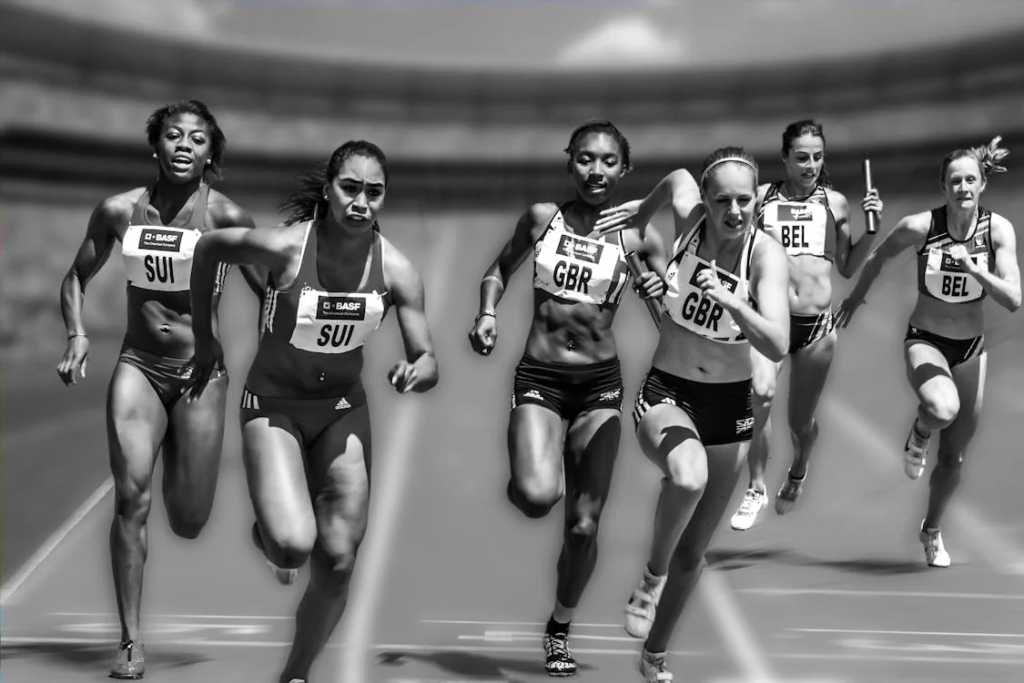Non runners- The term “non runners” often arises in various contexts, particularly in sports like horse racing, athletics, and even broader industries. This phrase, while seemingly straightforward, holds a complex and significant place depending on where it is applied. For enthusiasts, professionals, and casual observers, understanding non runners and their implications is essential. In this comprehensive article, we delve into the topic, exploring its definitions, causes, effects, and associated queries that people frequently search on Google and YouTube.
What Are Non Runners
Non runners refer to participants—often athletes, horses, or even teams—expected to compete in an event but withdrawn before the competition begins. In sports, this can stem from various reasons, ranging from medical issues to strategic decisions by trainers or managers. Although most commonly associated with horse racing, the term can apply to athletics, greyhound racing, or even metaphorical use in business contexts.
Non runners disrupt expectations, often reshaping the dynamics of a race or competition. Whether you’re a bettor, a fan, or an organizer, understanding why a participant pulls out and how it impacts the event is crucial.
Non Runners in Horse Racing
In horse racing, non runners are a significant focus of attention. Horses may be withdrawn from a race for several reasons, including health concerns, adverse weather conditions, or track issues. The British Horse Racing Authority (BHA), along with international racing bodies, has strict guidelines on the withdrawal process to ensure fairness and transparency.
Why Non Runners Matter in Horse Racing
For bettors, the withdrawal of a horse can alter the odds dramatically. When a favorite horse becomes a non runner, it might lead to changes in the betting market, often resulting in rule adjustments like the Rule 4 deduction. This system is designed to compensate for the reduced competition caused by a horse’s absence.
Fans and owners also face disappointment when a non runner impacts the excitement and stakes of a race. While safety and ethics remain the priority, non runners are often a source of debate regarding timing, transparency, and potential strategic misuse.
Common Reasons Behind Non Runners
Understanding why participants become non runners sheds light on their unavoidable nature. Below are some common reasons observed across sports and competitions.
Medical Issues or Injuries
This is perhaps the most cited reason for non runners. Whether it’s a horse experiencing lameness or an athlete dealing with a sprain, health concerns take precedence. With advanced medical checks and diagnostics, identifying potential risks early often leads to withdrawals as a precautionary measure.
Weather and Track Conditions
Adverse weather or unsuitable track conditions can pose a significant threat, especially in outdoor sports. In horse racing, a sudden downpour can make a track unsafe, leading trainers to pull their horses out to prevent injury.
Strategic Decisions
In some cases, withdrawals are purely strategic. For example, trainers or managers may decide not to run a horse or athlete in a particular event if conditions aren’t favorable or if they want to preserve their energy for a more critical race.
Logistical Issues
Transportation problems, administrative errors, or unforeseen travel disruptions can also lead to participants being listed as non runners.
The Impact of Non Runners on Betting
For those engaged in betting, non runners are more than just an inconvenience—they are a critical variable in the wagering process. When a favorite horse or team pulls out, bookmakers adjust their odds, which can lead to significant changes in potential payouts. This is why understanding how non runners affect betting is essential for gamblers.
Rule 4 deductions are a common mechanism in horse racing betting, where a percentage of winnings is deducted to balance the altered market. While bettors often express frustration over these deductions, they ensure fairness and equity across the betting pool.
Non Runners in Athletics and Other Sports

Non runners aren’t limited to horse racing; they also play a role in athletics and other sports like marathons, cycling, and even team sports. Athletes withdraw from events for reasons similar to those in horse racing, including health concerns and unfavorable conditions.
In team sports, the term “non runners” can metaphorically refer to players sidelined before a game begins. While less frequent in structured leagues, this can still impact team strategies and betting dynamics.
Ethical Considerations Around Non Runners
Non runners bring up several ethical questions, especially in the world of competitive sports and betting. Critics often question whether all withdrawals are genuinely in the best interest of the participants or if they’re influenced by ulterior motives such as market manipulation or strategic advantages. Transparency from governing bodies and participants is crucial to maintaining trust in any sport or competition.
How Technology Helps Predict Non Runners
In recent years, advancements in technology have improved the ability to predict and understand non runners. From wearable devices monitoring athletes’ health to real-time data analysis on race conditions, technology provides insights that reduce the risk of late withdrawals.
For bettors, apps and platforms now offer instant updates about non runners, ensuring that they can adjust their wagers accordingly. The integration of artificial intelligence and machine learning in sports analytics continues to shape the way non runners are managed and communicated.
Non Runners and Their Broader Implications
While often discussed in the context of sports, the term “non runners” has found metaphorical usage in broader areas such as politics, business, and everyday life. A “non runner” can describe an idea, project, or individual that is unlikely to succeed or continue in its current trajectory. This usage highlights the term’s versatility and the importance of understanding its various implications.
Searching for Non Runners: Common Queries
Many people turn to Google and YouTube to learn more about non runners. Common search queries include:
What happens when a horse becomes a non runner?
How do non runners affect betting odds?
Why do athletes withdraw from races?
What is Rule 4 in horse racing betting?
How to find updates on non runners before a race?
Platforms like YouTube offer visual explanations, betting tutorials, and race analysis, making them valuable resources for those seeking to understand the topic comprehensively.
Tips for Navigating Non Runners as a Bettor
While non runners are often unpredictable, bettors can take steps to mitigate their impact. Staying updated through reliable sources, understanding betting rules like Rule 4, and diversifying wagers can help minimize losses. Additionally, researching the history of participants and trainers can offer insights into potential withdrawal patterns.
To Conclude: The Complex World of Non Runners
Non runners, while often viewed as an inconvenience, play a critical role in maintaining the safety and integrity of sports and competitions. Understanding the reasons behind their occurrence, their impact on betting, and their broader implications is essential for fans, bettors, and stakeholders alike.
As technology continues to evolve and enhance communication, navigating the complexities of non runner is becoming easier for everyone involved. Whether you’re a seasoned bettor or a curious observer, staying informed about non runner ensures a more engaged and educated experience in the world of sports.
FAQs
What is a non-runner in horse racing?
A non-runner refers to a horse that was declared for a race but is later withdrawn before the event begins. Non-runner can occur for various reasons, such as injury, illness, unsuitable track conditions, or decisions made by the trainer or owner.
How are non-runner announced?
Non-runner are typically announced on the day of the race. Updates can be found on official race websites, betting platforms, and racing broadcasters. Many platforms provide real-time updates to ensure bettors are informed before placing their wagers.
What happens to bets on non-runner?
Ante-post bets: These are not refunded unless the bookmaker offers a “Non-Runner No Bet” (NRNB) promotion. Without NRNB, the stake is lost if the horse does not run.
Day-of-race bets: For non-runner declared after betting starts but before the race begins, stakes are usually refunded unless specified otherwise.
What is “Non-Runner No Bet”?
NRNB is a promotion offered by bookmakers where the stake is refunded if the horse does not participate in the race. This feature is commonly available for significant events like the Cheltenham Festival. Leading bookmakers like Bet365 and William Hill frequently offer this policy.
How are odds affected by non-runner?
When a horse is withdrawn, the odds on the remaining horses in the race are often adjusted. This process, called a “Rule 4 deduction,” accounts for the reduction in competition and is standardized by most bookmakers.
Why do horses become non-runner?
The primary reasons include:
Injury or illness: The horse may suffer a setback before the race.
Ground conditions: Trainers might pull horses if the track surface is deemed unsuitable.
Logistical issues: Transport problems or errors in entry declarations can also lead to non-runner.
Can non-runner affect race dynamics?
Yes, the absence of a horse can significantly impact the race strategy. For instance, a non-runner might alter the pace of the race or the positioning strategies of other competitors.
Are non-runner updates available for major festivals like Cheltenham?
Yes, for major festivals like Cheltenham, platforms such as The Winners Enclosure and GG Racing provide daily updates on non-runner and related betting offers. This ensures punters have the latest information before placing bets.
What are the consequences of declaring a horse as a non-runner late?
Late declarations of non-runner can lead to disruptions in betting markets and might affect the starting field size, influencing race classifications.
Where can I find up-to-date non-runner information?
For real-time updates, visit:
GG Racing for live non-runner lists and odds updates.
The Winners Enclosure for detailed updates on major events and NRNB promotions.
By staying informed about non-runner, you can better manage your betting strategy and enjoy a more seamless racing experience. Always check the latest updates on reputable platforms to ensure you don’t miss critical announcements.
To read more; Click here
